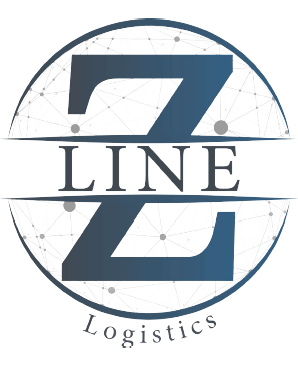Are you looking to streamline your supply chain and reduce costs? Low-Cost Country Sourcing (LCCS) might be the solution you need.
You as a business owner can significantly improve your company’s bottom line with LCCS by strategically sourcing products and services from countries with lower labor and production costs
In this post, we’ll delve into the key aspects of LCCS and provide you with six easy tips to implement this strategy effectively.
Table of Contents
What is Low Cost Country Sourcing (LCCS)?
Low-Cost Country Sourcing (LCCS) is a strategic approach where businesses source goods and services from countries with lower production and labor costs.
This strategy can significantly reduce overall procurement expenses while maintaining quality standards. For example, a US company might source raw materials from a Central American supplier instead of a domestic one to save costs.
Another Example of LCCS, A tech company based in Silicon Valley might source electronic components from manufacturers in countries like China or Vietnam.
These countries often have lower labor costs and well-established manufacturing infrastructure, allowing the tech company to reduce production costs and remain competitive in the global market.
To effectively implement LCCS, consider these seven tips:
Tip 1: Navigate the Tariff and Tax Landscape
Before diving into low-cost country sourcing, it’s crucial to navigate the complex landscape of tariffs and taxes. While these countries may offer lower labor costs, additional costs can arise from:
- Export Taxes: Some countries impose export taxes on specific goods, which can erode the cost advantage.
- Import Tariffs: High import tariffs can significantly increase the overall cost of sourcing.
- Customs Duties and Fees: These additional charges can impact the final cost of goods.
Key considerations:
- Trade Agreements: Leverage any free trade agreements your country has with low-cost countries to reduce or eliminate tariffs.
- Tariff Engineering: Consider alternative product configurations or sourcing strategies to minimize tariff costs.
- Consult with Customs Experts: Seek advice from customs brokers to ensure compliance with regulations and avoid potential penalties.

Learn more: The Power of Global Sourcing in Supply Chain Management
Tip 2: Master the Logistics and Transportation Puzzle
While low labor costs are a significant advantage of LCCS, it’s crucial to optimize logistics and transportation costs. Consider these factors:
- Shipping Method Selection: Carefully evaluate the trade-offs between speed and cost for different shipping methods (sea freight, air freight, or a combination).
- Fuel Surcharges: Monitor fuel prices and their impact on shipping costs.
- Handling Fees: Factor in costs related to loading, unloading, customs clearance, and warehousing.
- Transit Time: Balance the need for fast delivery with cost-effective shipping options. Longer transit times can impact inventory levels and cash flow.
Tip 3: Balancing Lead Times and Inventory Costs
While LCCS can offer significant cost advantages, it’s important to consider the potential impact of longer lead times on your supply chain.
- Economic Order Quantity (EOQ): Evaluate how longer lead times might affect your optimal order quantities. You may need to adjust your ordering strategies to maintain inventory levels while minimizing costs.
- Safety Stock: To mitigate the risk of stockouts due to longer lead times, you may need to increase your safety stock levels. However, this can lead to higher inventory holding costs.
- Cash Flow: Higher inventory levels tie up more capital, impacting your cash flow. Careful planning and forecasting can help minimize this impact.
For more information: Exploring Global Sourcing Advantages and Disadvantages
Tip 4: Prioritize Quality Control for Successful LCCS
While cost savings are a major driver for LCCS, it’s crucial to prioritize quality control. Compromising on quality can lead to costly product recalls, customer dissatisfaction, and reputational damage.
Key Quality Control Strategies:
- Set Clear Quality Standards: Establish detailed quality standards and share them with your suppliers.
- Conduct Regular Audits: Conduct regular on-site audits to assess supplier performance and adherence to quality standards.
- Utilize Third-Party Inspection: Engage third-party inspection services to verify product quality and compliance.
- Implement Robust Quality Control Systems: Establish effective quality control systems, including incoming inspections, in-process inspections, and final inspections.
Learn more: The Positive and Negative Impacts of the Amazon Effect on Freight in Dubai
Tip 5: Balancing Cost Savings with Supply Chain Resilience
While LCCS can offer significant cost advantages, it’s essential to consider the potential risks and disruptions.
Key Considerations:
- Supply Chain Resilience: Evaluate the reliability and stability of your supply chain. Consider factors like political instability, natural disasters, and labor strikes.
- Lead Times: Longer lead times associated with LCCS can impact your inventory levels and production schedules.
- Quality Control: Stringent quality control measures are crucial to ensure that products meet your standards and customer expectations.

For more information: What are the 4 Pillars of Global Sourcing?
Tip 6: Factor in The Hidden Costs of LCCS
While LCCS can offer significant cost savings, it’s important to consider the additional costs associated with managing and monitoring suppliers in distant locations.
Key Considerations:
- Increased Monitoring Costs:
- Site Visits: Regular on-site visits to inspect facilities and build relationships with suppliers can be time-consuming and expensive.
- Audits: Conducting audits to ensure compliance with quality, ethical, and regulatory standards requires resources.
- Technology: Investing in technology for remote monitoring and communication can help reduce travel costs but may still incur significant expenses.
- Management Time and Effort:
- Managing a global supply chain requires significant time and effort from procurement teams.
- Effective communication, coordination, and problem-solving are essential to ensure smooth operations.
By effectively implementing LCCS, businesses can significantly reduce costs, improve efficiency, and gain a competitive edge.
However, it’s crucial to approach LCCS strategically, considering factors like supplier selection, quality control, logistics, and risk management.
To maximize the benefits of LCCS, consider partnering with a trusted logistics provider like Z Line Logistics.
Our experts can help you navigate the complexities of global sourcing, identify suitable suppliers, optimize shipping routes, and ensure seamless supply chain operations.
Contact our experts at Z Line Logistics today to discuss your LCCS strategy and unlock the full potential of global sourcing.




